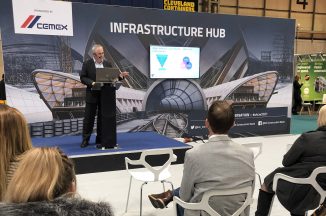
A hard-hitting report sets out the most detailed roadmap yet for improving the energy efficiency of the UK’s 29 million homes at a time when energy bills are soaring – but some of the country’s leakiest homes are still two decades away from being viable for retrofitting.
Nationwide Building Society commissioned Element Energy – a low-carbon energy consultancy – to analyse the UK’s diverse housing stock and determine the most suitable energy-efficiency measures and low-carbon heating systems required for different housing types, based on their material, design, age, and location, to understand where retrofitting efforts should be prioritised in the short (pre-2030), medium (mid-2030s), and long-term (late 2030s and 2040s). See below for a more in-depth breakdown.
While the recently announced package of support to cap energy prices is an important short-term intervention, this needs to be followed up with long-term measures designed to protect homes against fluctuating energy prices, reduce costs and support the transition away from fossil fuels to cleaner energy sources.
This research sets out how, over the long term, the infrastructure to support, and target, the retrofitting of the nation’s homes could be established, ensuring that no home is left behind in the race to net zero by 2050. With consumers also paying record high energy prices, the payback period for investing in green technologies, such as solar panels and air source heat pumps, is getting shorter all the time.
As increasingly high energy prices squeeze living costs, retrofitting measures could help households reduce energy bills by generating and retaining heat more efficiently. However, the report identifies significant cost and awareness barriers which are impeding progress against the UK’s 2050 net zero targets and reveals a significant ‘energy efficiency gap’ between the easiest and most difficult properties to decarbonise.
The report concludes that ‘easier to address’ homes must be targeted first in order to encourage the development of a retrofit supply chain and workforce. Combined with incentives from government and business, it is hoped that an economy of scale is developed, helping drive down costs for those living in the ‘harder to address’ homes from 2030 onwards – well ahead of the 2050 Net Zero target date.
According to the research, nine in ten (90%) homes rely on fossil fuels (gas or oil) for heating – making them vulnerable to fluctuating wholesale energy prices – and 40 per cent of homes currently lack ‘low hanging fruit’ green measures such as cavity wall or loft insulation, which could help lower energy usage and, therefore, bills. Far fewer have more advanced green measures, such as solar panels or heat pumps.
Graham Lloyd, Nationwide’s Strategy, Performance and Sustainability Director, said: “As consumers experience record high energy prices, the need to retrofit the UK’s homes, which are some of the oldest, coldest, and leakiest in Europe, has never been more pressing. This ground-breaking research is a wake-up call to the scale of the green homes challenge, one which cannot be overcome without significant backing and investment from the government. Not all homes are the same, which is why we need to stagger our approach to energy efficiency by targeting the properties that are the easiest and most straightforward to retrofit today.
“Making the UK’s 29 million homes more energy efficient will take decades to achieve due to the wide variety, and compatibility, of different property types. But if we do not start targeting our retrofit initiatives at the easier wins then we will simply not be able to build the critical mass required for a green homes’ revolution. For the first time, this report gives us a clear blueprint of how we can collectively achieve that.”
Nicole Ferguson, Principal Consultant at Element Energy, said: “Our research lays out how Governments and businesses can reasonably support homes to decarbonise their heating. In the near term, it highlights that Government urgently needs to develop and implement a long-term strategy for retrofitting homes and increase the funding support for energy efficiency and low carbon heating. The impact of which could support consumers to reduce their energy use and heating bills while kick-starting the supply chain and reducing the number of carbon emitting homes before it is too late.”
Short-term retrofit priorities: A significant proportion of homes will need to take up low carbon heating by 2030 to boost the supply chain, including:
- Off-gas homes: Properties with high running costs and no gas alternative.
- Well-insulated: Homes with loft or cavity wall insulation will require minimal efficiency improvements.
- Early adopters: Those with low-carbon technologies (e.g. solar PV) are likely to consider other measures.
- Newbuilds: Often built to higher green standards and don’t face the same limitations as older properties.
- Social housing and fuel-poor homes: Flats and buildings with lower insulation requirements that could benefit from communal heating systems should be easiest to target.
Medium-term retrofit priorities: By the mid-2030s, the supply chain will be developed, and low-carbon heating deployment will need to reach a peak, supported by regulation, funding and private sector offerings, including:
- Owner-occupied homes: Able to add simpler insulation measures (e.g. loft or cavity wall) and heat pumps.
- Private rented homes: These will be targeted by increasing regulatory standards for new leases.
Long-term retrofit priorities: Specific action will be required to ensure the ‘hardest to decarbonise’ are not left lagging behind, including:
- Older, poorly insulated homes (owner-occupied): Far higher insulation costs to make heat pumps viable.
- Heritage listed and space constrained homes: Will likely carry higher costs for energy efficiency and may not be able to benefit from heat pumps.
While ‘low-hanging fruit’, such as loft insulation, is potentially more accessible for more homes, and can have a positive impact on energy bills, there remains, however, several hurdles that are impeding progress on a national scale:
- Costs out of reach: The upfront costs of existing retrofit packages are high (ranging from £6.5k to £50k depending on housing type, with average costs of £10k for a single home). This is increasingly beyond most households as energy prices rise and the cost-of-living crisis bite.
- Awareness and understanding: The energy efficiency landscape is complex and there is limited understanding of the benefits of retrofitting among households in relation to their type of property.
- Supply chain and trade expertise: The retrofit industry will remain underdeveloped without long-term commitment from government to incentivise suppliers and installers to develop the skills a mature market needs.
- Government support: While 2021’s Heat and Buildings Strategy was a step in the right direction, a lack of clarity around long-term government support is disincentivising many from retrofitting.





